Comments from the Chair
Nuclear waste
HR 3053, the Nuclear Waste Policy Amendments Act of 2017, is another industry handout we must stop (Call your Rep at 202.224.3121). We continue to actively oppose “Interim Storage”, probably in West Texas, knowing it will be de facto permanent, without adequate standards of permanence. It will also mean thousands of unnecessary loads of toxic waste through our cities, including SA.
SAWS rate increases
On November 9, COSA (City of SA) City Council will vote on a new set of rate increases by SAWS. Please notify COSA of your opposition, even if you are not “represented” (i.e. don’t live in SA). These rate increases are unfair (as detailed by Conservation Chair Meredith McGuire).
EPA ignores air pollution laws
Regional ozone levels this year have been as high as 89 ppb (current standard below 70). EPA was legally obligated to announce on Oct 1st our regional non-attainment for ozone but chose to ignore the law and remain silent. We are in the odd situation of being clearly in non-attainment (3 year average 74) but not able to act on this with the authority that comes from non-attainment designation. The Pruitt EPA also attempted to void the newer standard of 70 and go back to the previous standard of 75 (which we are on the verge of exceeding also). As our air quality deteriorates the politicians dither and the lawyers keep busy.
Elections on the horizon
November 7 ballots are now available. I urge all to look especially at candidates for SARA (San Antonio River Authority). These are very important for us. I personally was especially impressed by first and last. Early voting is on now!
Our Political Committee is already beginning to work toward spring 2018 primary and fall general elections. As 2016 showed, elections matter. Voting is important. Finding and supporting good candidates can make a huge difference, and we see the positive effect of that here in our local elections this May and June. This is another great way to be involved (contact Darby Riley).
Lone Star Chapter has released its “scorecard” of the 2017 Legislature. SA delegation did pretty well in an otherwise largely horrible legislative session. Our worst performers include Lyle Larson (60%+) and Donna Campbell (27%). Our own Speaker Joe Straus does not vote, but did much to prevent passage of catastrophic social legislation. His retirement could be very bad for many.
Get involved in Alamo Group activities
We have active youth and general outing programs, and more help is always needed and welcome. We need a new Outings Committee Chairman (contact Jerry Morrisey). Visit the Alamo Sierra Club Outings page on Meetup for detailed information about all of our upcoming Sierra Club Outings.
We have monthly general interest meetings, third Tuesday 6:30 pm at EcoCentro and fourth Thursday 6:30 pm at Lions Field, where speakers discuss varied topics of local interest and environmental films are shown. Our Program Director Barbara McMillin has done a tremendous job for us for many years, and has announced her retirement from this position at the end of the year. We need someone NOW to get involved and become our next Program Director.
We need a volunteer to help expand our membership outreach. Contact me if you're interested in helping us grow our membership. We do not do enough to welcome new members, assist members in finding ways to get involved, follow up with member issues and renewals etc. This is a great opportunity for a volunteer to help us do a better job in reaching out to and representing our entire community.
We also need fundraising leadership, contact me if you're interested in building our resources. Our activities, especially involving various campaigns, often cost money and fundraising needs are on going. Mail-in and online donations are always appreciated (please indicate for Alamo SC use). We are searching for new fundraising leadership to help with new activities such as auction/holiday party etc. Please consider volunteering to help.
Zinke wants huge park fee increases
“Under a new proposal from the Department of the Interior, led by public lands enemy Ryan Zinke, entrance fees at national parks from Alaska to Maine would skyrocket an astonishing 180 percent.” This proposal will supposedly help fund the NPS $12 billion backlog of needed maintenance. In fact it will bar thousands of middle and lower income families from entrance to our most popular and heavily visited parks. This is no way to fund our park system.
by Terry Burns, M.D., Alamo Group Chair
A Photographic Peek at Some Bandera Canyonlands Critters
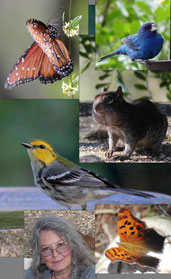
At our November General Meeting, author Merry Baker Langlinais will give us a look at some of our Hill Country animal neighbors through the eyes of an untrained naturalist. Join us to view inspiring images of the butterflies gathered by Merry, as she followed them for five years.
Tuesday, November 21st
6:30 p.m.
William R. Sinkin Eco Centro, 1802 North Main Avenue
Map
Merry is the author and photographer of Critters of Red Heart Winged Ones II: In the Canyonlands of Bandera County, Texas, which identifies all the native plants being utilized by the 65 species of butterflies of the Hill Country. Planting some of these native plants will help us keep a healthy supply of these winged critters for the future.
Merry was recommended by Jerry Morrisey, and is a former Alamo Sierra Club president. She is a member of the Bandera County Historical Commission and Editor of The Historian, the quarterly publication of the Commission. In addition, she is the President of the Bandera Canyonlands Alliance (Neighbors working together to protect and preserve the natural beauty and rural way of life in the Bandera Canyonlands). She has also written Silenced Only by the Dawn, a history of her Hill Country family. Copies of her book will be available for purchase.
This event is free and open to the public.
Lead Poisoning in Peru
Just recently, in Lima, Peru, the Ministry of the Environment (MINAM) declared an environmental emergency in two neighborhoods of the district of Callao – Ventanilla and Mi Peru – because of high lead concentrations in the air and the blood stream of children in this part of the city. This situation was first formally denounced three years ago in El Comercio, the major newspaper of Peru.
The sad reality in Peru is that in this area the measure of lead in the air has been increasing over time. In 2012, there were 0.42 μg/m3 (micrograms/cubic meter of air). By 2015 it has risen to 2.46 μg/m3 (the international limit is 0.5 μg/m3).
These two neighborhoods are part of the port district Callao, with a population of 1 million. A recent study showed all of children living there with some level of lead in their blood, with 30% above international norms.
During this emergency decree that lasts three month, the government will try to halt the contamination generated by a group of industries that make lead castings, located in the Industrial Park of Ventanilla. These processes emit lead, cadmium and other heavy metals.
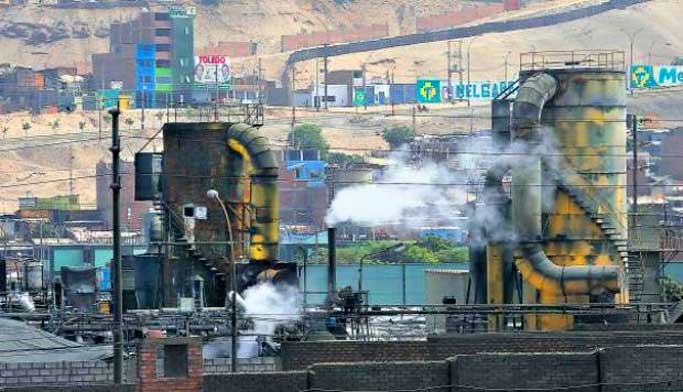
Worldwide, the contamination of water, land and air is said to have caused more deaths than all the wars on earth. More than smoking, hunger and natural disasters. More than HIV, TB and malaria together. The economic cost is staggering, more $4.5 billion annually, or 6.2% of the world’s economy. Almost all – some 92% - of the deaths stemming from contamination occurr in the developing world. But the developed nations of the world benefit from the inadequate regulations and their lax enforcement abroad with low commodity prices at home.
Peru is the 4th largest producer of lead, which is used mostly in the manufacturing of batteries. It exports 216,700 metric tons of lead annually. It is also among the countries most contaminated by heavy metals.
In Callao, since 2012, there have been accusations, investigations, reports, monitoring, and legal actions by private organizations and local and national governmental entities. Supposedly there are four manufacturing plants in la Ventanilla in the process of being sanctioned, although these cases are still unresolved. Another nine plants have “open” investigations against them, some dating back to 2015. At the local level there has been a request to rezone the area where these plants are located, therefore making them illegal, but the district government of Callao has not taken any action on this request.
None of this is new. Back in in 1998 the Minister of Health acknowledged the alarming levels of lead in infants in Callao. In 2001, the Health Director of Callao declared a health emergency over lead contamination and at various times Congress has emitted declarations about the theme, but all has resulted in little positive action.
At home we shouldn’t be complacent that such things can’t happen here. We need to be vigilant about the radical changes in the direction of the EPA and its personnel, from the new secretary Scott Pruitt, to Mary Beck, head of the toxic chemical unit and leading the charge to loosen regulations by reducing the tracking of health effects of chemicals. Maybe we have reduced the effects of lead poising in our country, but there are plenty of other toxins out there with deleterious effects on our health that pose both short-term and long-term hazards. The direction that the new Trump administration is taking in this regard cannot be ignored.
by John B. Hertz, Green Buildings Leader, from Lima, Peru
Mount St. Helens National Monument
Mt. St. Helens erupted suddenly at 8:32 am May 18th, 1980, blowing down or scorching 230 square miles of forest. Fifty-seven people died. It is all coming back but the evidence remains and everything is so extremely scenic.
The pictures below are from a trip to Mt. Rainier National Park this past September. For some info on Mt. Rainier National Park and pictures see an article in the June 2017 issue of this newsletter. There was much luck involved with the pictures this trip due to wind direction; the days before and after were very hazy due to many forest fires to the north and south.
Mt. St. Helens is the 52nd highest peak in Washington at 8365'; here is the list. Rainier is highest and Adams (2nd picture below) is 2nd highest. Before the eruption St. Helens was around 9600' high, which was 5th highest.
Most of the mountains in the northwest were given English names by early white explorers. It is interesting to know what they were known as by the indigenous peoples. St. Helens was called Lawetlat'la and Loowit. Adams was Pahtoe and Klickitat. Rainier was Tahoma. McKinley (named for then-presidential candidate McKinley, 1896) in Alaska has been officially renamed Denali, what the locals called it.
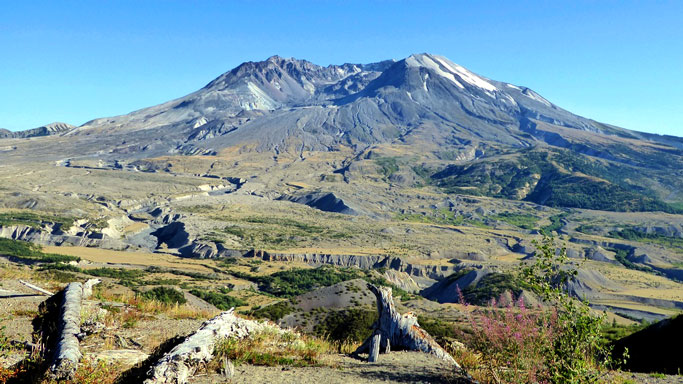
Visiting
Mt. St. Helens National Monument is on the west side of Gifford Pinchot National Forest and one of the few national monuments administered by the US Forest Service (US Department of Agriculture) instead of the National Park Service (US Department of the Interior). Here's the visitor guide which includes monument and area maps. You can visit either from the east or west; doing both requires a bit of a drive around, as the mountain is in the way. But then you would have an excuse to visit Mt Rainier National Park, to the north, or drive along the Colombia River gorge to the south.
On the east side there are campgrounds in the national forest and a bunch of trails accessible via forest service roads 25 and 64 which run north/south between Randle and Carson (see the area map). Of note are the short trails to Norway Pass and from Windy Ridge.
On the west side there are no campgrounds except a state park on the way in on state highway 504. From the latter road you have the best views of the north side of the mountain, which is the blast zone. From the end of highway 504 there is Coldwater Ridge Visitor Center and Johnson Ridge Observatory. Many trails depart from the latter including Coldwater Peak Trail, from which the 2nd and 3rd pictures were taken. Entry into the blast zone is prohibited (see the monument map) to preserve the environment for future research and monitoring.
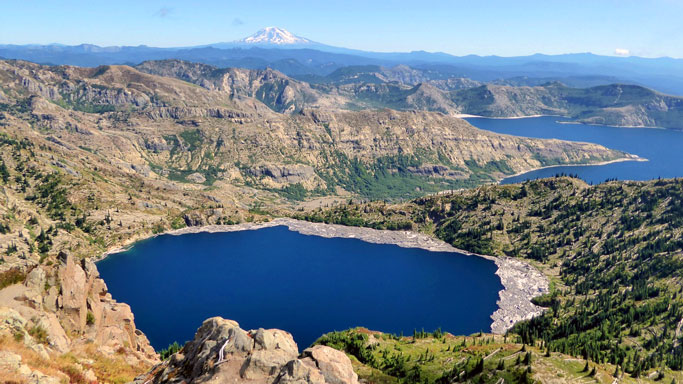
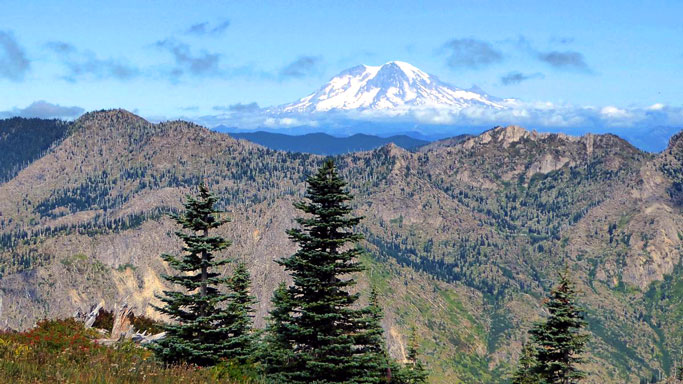
For further info
Washington Trails Association has a good web page on hiking around Mt. St. Helens, which route is the Loowit Trail. There is the Mt. St. Helens Institute. And here is the mountain's Wikipedia page.
Regarding Washington scenic byways, see experiencewa.com and wsdot.wa.gov. This is not far north of Oregon; from Coldwater Peak I could see Mt. Hood, 60 miles away, east-southeast of Portland. So for Oregon scenic byways see traveloregon.com, and here is the Oregon scenic byways brochure as a PDF.
by Kevin Hartley, Alamo Group Outings leader
Human Behavior and the Environment
Today, we humans are the cause of virtually all the environmental problems we face - the way we live and behave in relation to the natural world. So why are we doing this and how can we change? These are the questions we discussed at the September 28th Alamo Sierra Club meeting. The causes of human behavior are complex, and we discussed many things. But here is a brief sampling.
At a basic level is self-interest. We all have to take care of ourselves – find food, clothing, shelter, and so on. We all seek survival and well-being. This is virtually always present in environmental problems and disputes. Self-interest can be excessive, and we call that selfishness or greed. What constitutes moderation, however, is a hard question. People have different ideas of that. But like almost all behavioral traits, self-interest varies: some people are quite selfish; some are very unselfish and altruistic; but most of us are in-between. Peoples’ self-interest should be kept in mind in any environmental issue or discussion.
Another aspect of our behavior in relation to the environment is our concept of happiness. In American culture, this is often defined in terms of wealth, possessions, power, mobility, and so on. This attitude tends to produce behavior that puts heavy demands on the ecosystem. We need to think of ways to redefine happiness. What really constitutes human flourishing? What does it really mean to be “happy”? These questions have profound implications for the way we live and our impact on the ecosystems that surround and support us.
Another factor is tribalism, or in-group preference. We naturally prefer to be with people that look, talk, and act like us – who share our language, social norms, goals, and values. These feelings are spontaneous and involuntary. This results in a lot of “preaching-to-the-choir,” as we interact with like-minded people of our “tribe” or “in-group.” We affirm one another and criticize the out-group. In the U.S. today, tribalism contributes to our deep political divide, which involves our differences on environmental issues. But tribalism can be positive. It can help build social communities and marshal support for causes that affect particular constituencies. Perhaps we should try to be more aware of tribalism – in ourselves as well as in others – and think about ways to moderate it and use it constructively.
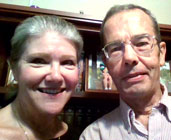
Another innate human tendency is temporal-spatial discounting. We tend to discount the value and importance of events, things, and people that are far away in space and time. For example, we are more likely to help a starving child on our doorstep than one who is a thousand miles away, or attend to a flood in our community today than one that may come sometime in the future. Temporal-spatial discounting plays a huge role in the human response to climate change – a slow, variable long-term process. This makes it difficult for us to perceive it as a meaningful threat and take action. When and how the impacts of climate change will become sufficiently close to us in time and space to evoke behavioral change is not known. But meanwhile we should keep working for climate action, and think about ways to overcome our natural tendency to discount the planet and the future.
We also noted that much of our daily behavior is unconscious. It’s just habit or what everybody does, or what comes naturally. But at least some of this unconscious behavior is environmentally problematic. How can we become more self-aware so that we can begin to think about ways to change our unconscious behavior?
Finally, we humans are highly social beings. Probably most of our time and energy is spent inside our “human social worlds,” attending to our relations and affairs with our fellow humans – social, economic, political, and so on. Because of this, it can be hard to get people to be aware of the ecosystem and the flora and fauna that surrounds us but that we generally perceive as “outside” of our human social world. Perhaps we can connect environmental concerns with social concerns. The Sierra Club and other environmental organizations actually often do this in various ways – for example, by noting the impact of pollution or resource depletion on our children or our social communities. But can we think of other creative ways to make the ecological social and the social ecological?
We discussed several other things, but this gives you a little sampling. If anyone has other ideas or thoughts about basic human behavior and environmental problems, please e-mail me. Thanks again to everyone who attended the meeting and for their wonderful contributions.
by John and Betsy Mustol
Editor's note: This essay was the subject of our September 28th General Meeting presentation by the authors.

Outings: The Call of the Wild
Visit the Alamo Sierra Club Outings page on Meetup for detailed information about all of our upcoming Sierra Club Outings.
The Alamo Sierran Newsletter
Richard Alles, Editor
Published by The Alamo Group of the Sierra Club, P.O. Box 6443, San Antonio, TX 78209, AlamoSierraClub.org.
The Alamo Group is one of 13 regional groups within the Lone Star Chapter of the Sierra Club.
Keep your email address current!
Send updates to Loyd Cortez, providing your name, address and membership number (if known).
Changed your mailing address?
Have you moved? Let us know by sending your old address, your new address and your member number (look on the upper left corner of your mailing label) to: address.changes@sierraclub.org.
Go online for the latest news and events
 |